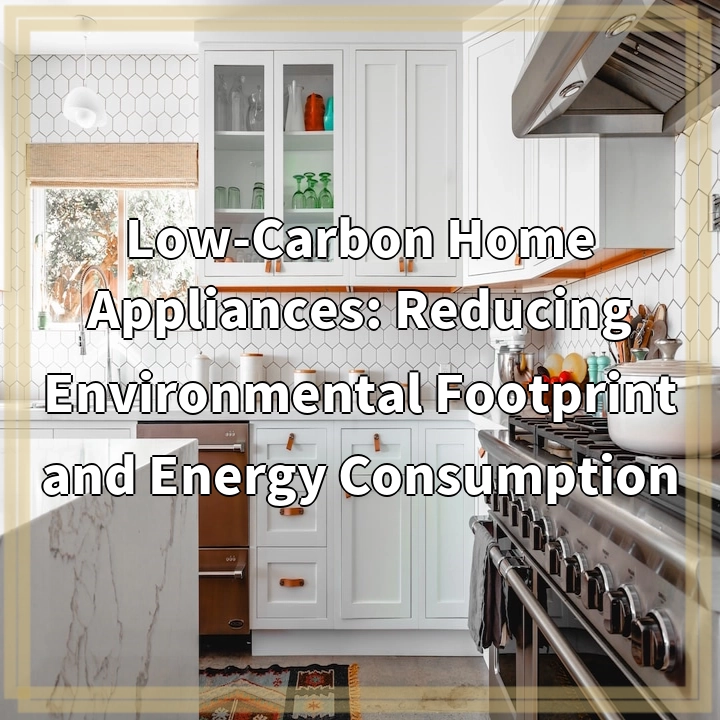
What are Low-Carbon Home Appliances?
Low-carbon home appliances refer to household appliances that have been designed and manufactured with the goal of reducing their environmental footprint and energy consumption. These appliances are designed to be more energy-efficient, using less electricity or fuel to perform their intended functions.
Real-World Problems Associated with Low-Carbon Home Appliances
Despite the growing popularity and importance of low-carbon home appliances, there are several challenges and issues that need to be addressed:
1. Limited Awareness:
Many consumers are still not fully aware of the benefits and importance of low-carbon home appliances. This lack of awareness often leads to purchasing decisions based solely on initial cost rather than the long-term benefits of energy efficiency and environmental impact.
2. High Initial Costs:
One significant barrier to the widespread adoption of low-carbon home appliances is their higher initial cost compared to conventional appliances. Although energy savings over time can offset the initial investment, the higher upfront cost can deter some consumers from making the switch.
3. Lack of Accessibility:
In some regions, low-carbon home appliances may not be widely available or easily accessible. This can make it challenging for consumers to find and purchase these appliances, limiting their ability to contribute to a more sustainable and energy-efficient lifestyle.
4. Product Quality and Performance:
There is a concern among consumers that low-carbon home appliances may sacrifice performance and quality compared to conventional models. This perception can lead to hesitancy in adopting greener technologies, despite advancements in the efficiency and effectiveness of low-carbon appliances in recent years.
5. Disposal and Recycling:
Proper disposal and recycling of outdated appliances remains a challenge. Many older appliances contain harmful materials and chemicals that can leach into the environment if not handled properly. Enhancing recycling programs and responsible disposal options is crucial for minimizing the environmental impact associated with the replacement of appliances.
Addressing these real-world problems associated with low-carbon home appliances requires a concerted effort from manufacturers, retailers, policymakers, and consumers. By raising awareness, offering incentives, and fostering innovation, we can accelerate the transition to a more sustainable and energy-efficient future.

Solutions to the Problems Associated with Low-Carbon Home Appliances
Addressing the challenges and issues related to low-carbon home appliances requires a collaborative effort involving various stakeholders. Here are some solutions to consider:
1. Increasing Awareness:
Educational campaigns and initiatives can be launched to raise awareness about the benefits of low-carbon home appliances. This can include outreach programs, public awareness campaigns, and informative content highlighting the long-term financial and environmental advantages.
2. Financial Incentives:
Policymakers can implement financial incentives such as tax credits or rebates for consumers who purchase low-carbon home appliances. These incentives can help offset the initial higher costs and encourage the adoption of energy-efficient technologies.
3. Accessibility and Availability:
Manufacturers and retailers should work towards making low-carbon home appliances more accessible and readily available. This can involve expanding distribution channels, collaborating with retailers to increase product visibility, and exploring partnerships to reach underserved communities.
4. Enhancing Product Performance:
Continued research and development efforts should focus on improving the performance and quality of low-carbon home appliances. It is essential to dispel any misconceptions and demonstrate that energy-efficient appliances can be just as reliable and effective as conventional models.
5. Recycling Programs:
Efforts should be made to improve recycling programs for outdated appliances. Manufacturers can participate in take-back programs and implement responsible recycling practices. Additionally, consumers should be educated and encouraged to dispose of old appliances properly at designated recycling centers.
By implementing these solutions, we can overcome the challenges associated with low-carbon home appliances and accelerate the transition to a more sustainable and energy-efficient future for our homes and the planet.















